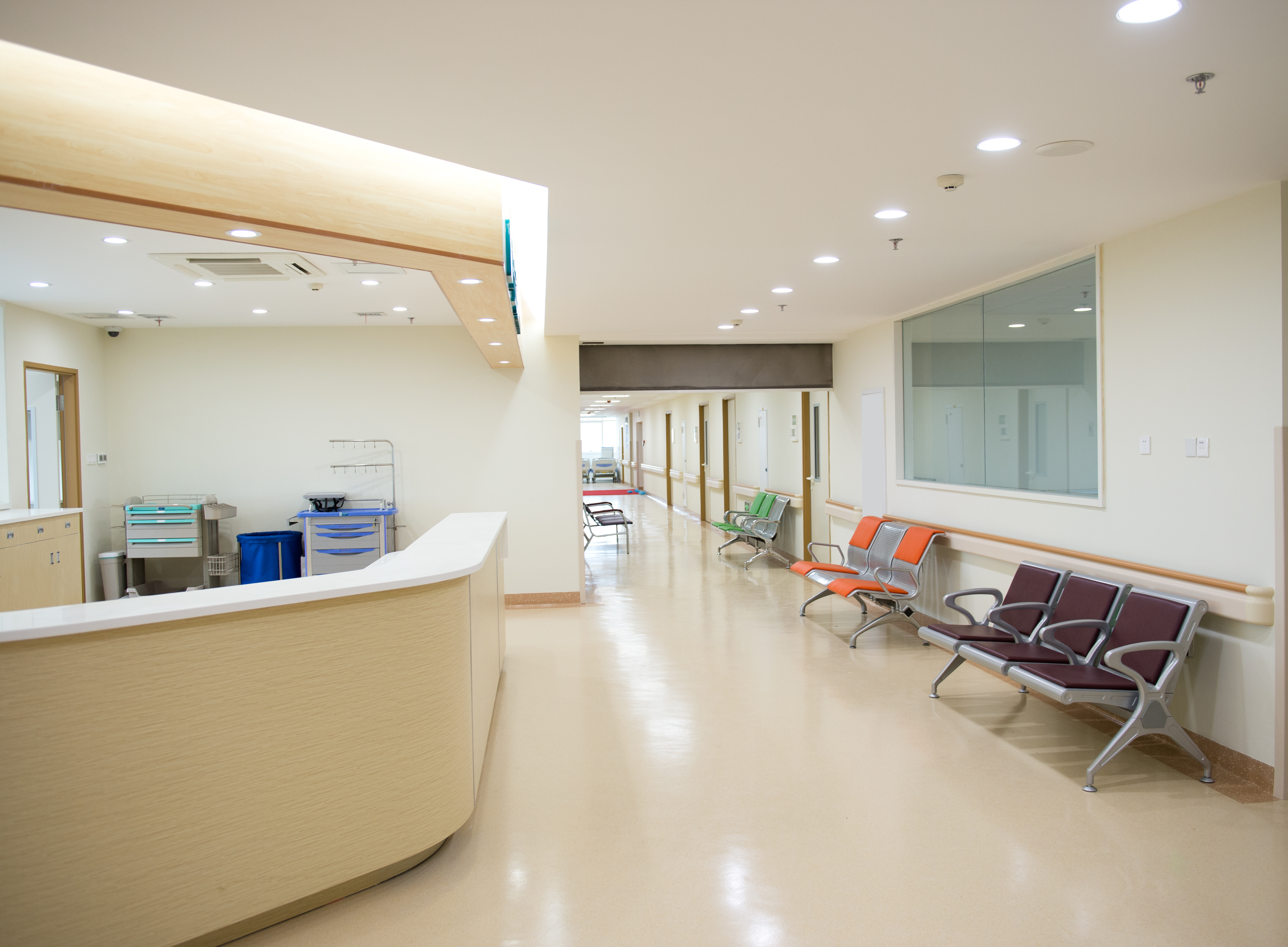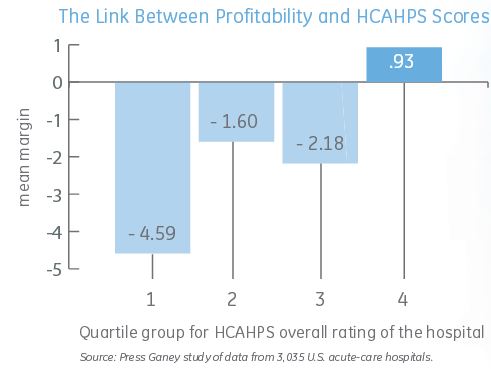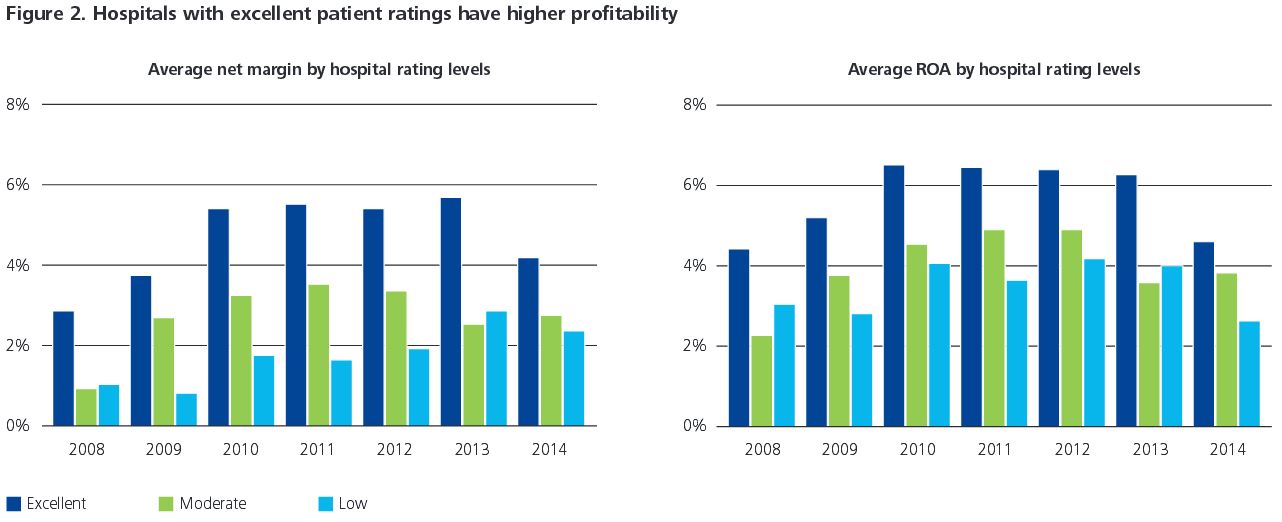Managing costs while improving value-based care continues to be a challenge for the healthcare industry. Value-based care, an initiative to provide only the care and services that patients want and need, derived from the initiative to improve the patient experience. Improving the patient experience consists of many variables, including the way in which a patient interacts with the physical environment. Patient physical environment interactions include light levels and thermal comfort conditions. Improving these energy management functions have been linked directly to higher patient satisfaction. The following will detail the importance of improving patient satisfaction through energy management solutions and how that relationship drives profitability.
Patient Satisfaction and the Physical Environment
According to Patient Safety and Quality: An Evidence-Based Handbook for Nurses, researchers identified that the physical environment has a significant impact on patient safety and staff performance in delivering care. Factors that influence the physical environment as it relates to energy management include:
- Proper lighting (including the use of natural light)
- Optimizing ventilation and filtration systems for indoor air quality and the prevention of diseases
- Ensuring the size, layout, and structure meets the diverse needs of patients
The study notes, in just one example, that low lighting levels were shown to affect the quality of care and the overall safety of patients.
In Thermal comfort of patients in hospital ward areas, thermal conditions were proven to be a prime importance for patient satisfaction. Air temperatures between 70 and 72 degrees and a relative humidity between 30% and 70% were preferred by patients. While keeping thermal temperatures and humidity levels at desired levels throughout the hospital is not an extraordinary challenge, doing so without wasting an enormous amount of energy can be, especially when “comfort in patient rooms is often managed using very old technology.” It is important to note that thermostats in patient rooms only measure the ambient air temperature; that is, the actual temperature levels of the room. A thermostat cannot account for variables that may alter how a patient experiences room temperatures. Radiant hot or cold surfaces, uncomfortable drafts, or excessive humidity could make a room measured at 72 degrees feel much colder or warmer than the setpoint temperature. If the primary goal is patient satisfaction, this is a barrier that could impede the energy efficiency of the facility.
When patients are consistently uncomfortable, the hospital facility team will do what it takes, despite the system constraints, to make patients comfortable. This priority suggests that energy conservation goals are likely to be sacrificed if the system design doesn’t accommodate adjustment for comfort.
Source: Facilitiesnet
Ensuring the right lighting and thermal management levels are consistent throughout not only improve patient satisfaction, but can also improve staff productivity and reduce energy costs. These relationships have a direct effect on a healthcare organization’s bottom line.
Driving Profitability Through Patient Satisfaction
The number one measurement of the patient experience in healthcare facilities is the Hospital Consumer Assessment of Healthcare Providers and Systems (HCAHPS) survey. The survey is distributed to inpatients after a stay at healthcare facilities across the U.S. The data collected can have an impact on the prosperity of a healthcare facility through gains or losses of Medicare payment reimbursement dollars for each fiscal year. “Value-based purchasing programs and HCAHPS scores are estimated to place at risk an average of $500,000 to $850,000 annually per hospital.” That risk, however, seems to affect only hospitals with low HCAHPS scores. According to a Press Ganey study on data from 3,035 U.S. hospitals:
“25% of hospitals with the highest HCAHPS scores were also the most profitable . . . . In fact, only the hospitals in the top quartile for patient ratings showed a positive profit margin.”
Source: API Healthcare
This data is supported in a comprehensive study by the Deloitte Center for Health Solutions using descriptive and regression analyses on HCAHPS scores. Simply put, the study found hospitals with higher patient experience ratings achieved higher profitability.
Source: Deloitte
Best Practices and Energy Project Implementation
If we consider the positive relationship between patient experience and physical environment interactions, there is value in considering energy management solutions. This point is exacerbated by the fact that healthcare facilities are notorious for their high energy use and long hours of operation. Healthcare facilities consume energy in both simple and complex ways. Each healthcare facility will present similar, but unique challenges to the ways in which energy efficiency measures can be applied and how those applications will reduce costs.
Unfortunately, most small- and medium-sized healthcare facilities struggle to implement energy efficiency measures. According to a 2015 Massachusetts Energy Efficiency Advisory Council (MEEAC) study, 60% of small health care facilities and 50% of medium sized health care facilities have not made any capital expenditures on their building systems since 2011, compared to only 29% of large hospitals.” There are plenty of low-hanging fruit opportunities that can represent significant savings. According to Clark Reed, the national program manager for Energy Star Commercial Buildings, “to realize rapid gains in energy efficiency, the first step is to retrocommission, or fine-tune, existing HVAC equipment and controls, which often fall out of calibration over time.” By taking advantage of the energy efficiency projects with the best financial returns, “most health systems can save 20 to 30 percent in energy costs,” says Jeff Rich, executive director of Envision Healthcare.
To ensure an energy efficiency project is greenlighted, it is critical to work around budget barriers and obtain buy-in from senior management. Best practices dictate focusing on proper planning and implementation:
- Schedule a comprehensive facility audit to identify energy inefficiencies and areas for improvement
- Investigate proposals that focus on the following:
- Reduce owner risk
- Improve patient and staff comfort and satisfaction
- Improve indoor air quality (IAQ)
- Improve energy management and control
- Improve light levels
- Reduce maintenance costs
- Improve lifespan of equipment
- Develop a multi-stage implementation plan that will satisfy energy savings and maximize ROI
- Demonstrate how the plan will secure the facility’s long-term financial stability and comply with regulatory requirements
Bottom Line
Healthcare institutions that improve patient satisfaction perform better financially. Energy management functions of the physical environment are married to patient satisfaction. Improving the building infrastructure—lighting, HVAC, and other mechanical processes—is a cost-effective way to improve the patient experience and drive profitability. Unfortunately, many small-to-medium-sized healthcare facilities have not taken advantage of the energy efficiency opportunities available. Starting with low-hanging fruit projects that have attractive return on investments can set the groundwork for future, more advanced projects to improve the patient experience and reduce operating expenses.






